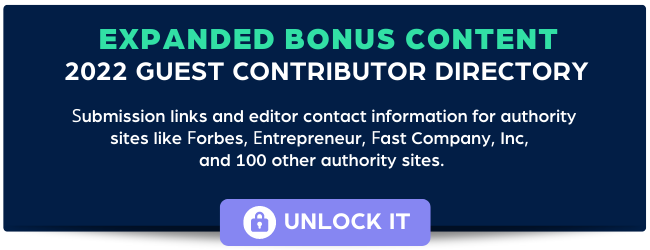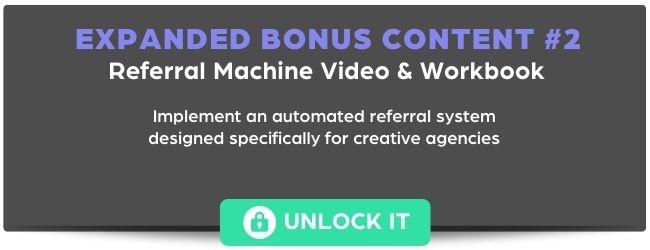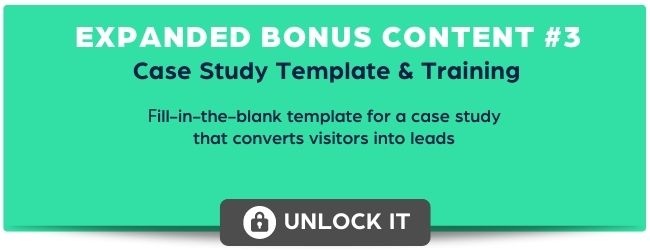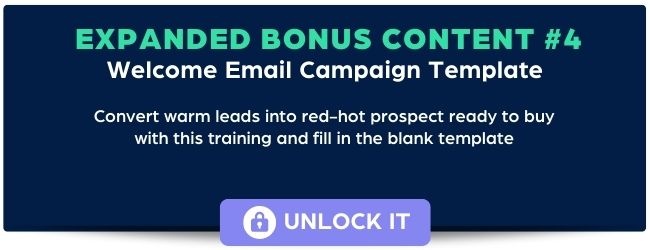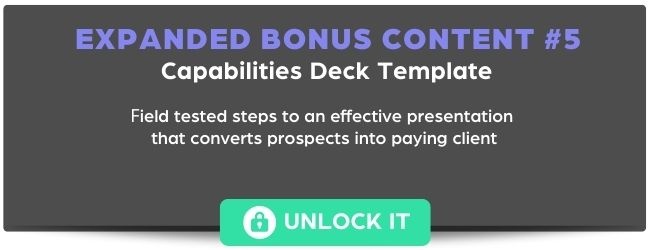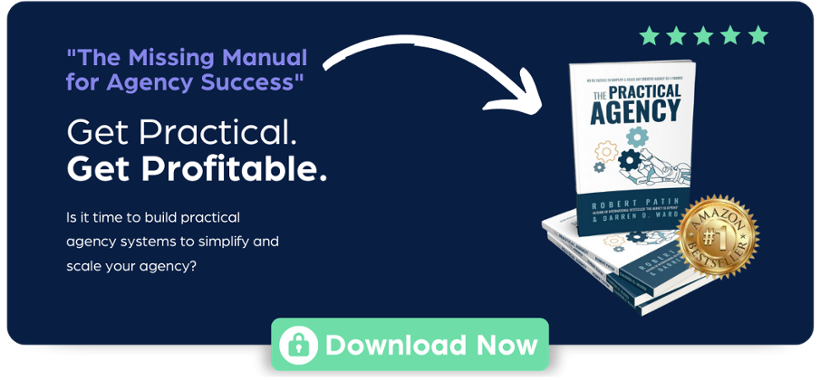Ultimate Guide On Getting High Value Clients For Your Agency
It's no secret that landing high value clients is essential for all types of creative agencies, but it can be tough to know where to start.
Securing new business is always a challenge, but it's especially difficult when you're in a highly competitive market. And if you're like most agencies, you're probably wasting time and money chasing after low-value clients who aren't a good fit for your business.
In this post, we'll break down the three phases for agencies to attract and convert high value clients.
Phase 1 | Make It Easier for Clients To Choose You
With hundreds of agencies out there, the competition for clients can be tough. So, make it easy for clients to pick you as their best choice.
How?
I've broken down the four steps below...
Step 1: Niche Down
A lot of agencies might be hesitant to limit the type of clients they work with. They think that by focusing on just one industry or market, they’ll reduce the number of their potential clients.
In reality, the opposite is true.
When you niche down, you become specialized. That is, you start providing specific solutions to specific problems of a specific market. The businesses in that market will then see you as the only agency that can address their problems.
As a result, you’ll reduce the number of competitors who are vying for the attention of your target audience.
This is the best way for attracting the right clients who won’t ask you to do things you’re not prepared for.
Not that long ago, coffee was all the same. When Starbucks burst into the coffee market with its gourmet blends, it suddenly became all the rage.
Being the first of its kind and creating a category of its own allowed Starbucks to dominate the coffee niche. After all, they found that customers were more than happy to pay more for well-crafted coffee.
You can apply the same principle when niching down your agency.
Create a micro-specialization with services that only you can offer to prospective clients within your niche.
To find your micro-specialization, you need to break down your niche several levels.
For example, let's say you own a branding agency. Your's may look like this:
Branding ⇒ Design ⇒ E Commerce Sites ⇒ Clothing
Branding ⇒ Strategy ⇒ Health Industry
Branding ⇒ Campaigns ⇒ SaaS Industry ⇒ Financial Services
You can see that each one of those are VERY specific, and if you were to focus your energy on one of those niches, you would have no problem owning that market in under a year.
By leveraging your chosen niche, you’re helping prospective clients self-select.
If we were to use the SaaS Industry example above, if you were to pitch a branding package to a company that was wanting to launch a campaign for a new loan life cycle management suite to small banks...you would have no competition.
Not only is prospecting easier now, but it reduces the sales process because those prospects are already clear on what you do. They will need less convincing that you’re the right fit for them.
What’s more, you’ll be able to provide more value to those prospective clients.
You’ll understand exactly who your client’s target market is. And through this, you’ll generate more consistent and high-quality results that your clients will appreciate.
Step 2: Identify Your Ideal Client
The reality is that identifying your ideal client is a process. And it starts by acknowledging that your existing clients may not necessarily be your ideal ones.
So, what you need to do is think about who it is that you want to serve. You also need to get clear on the industry that you're looking to work with.
I did a training for our free community, Creative Agency Clique, on this topic:
In the training I broke down how to figure out who your ideal client is in five steps:
STEP 1: Determine your goals
You want to first understand how much revenue you want to earn on a monthly or annual basis. This will give you an idea of how many clients you would need to work with.
You can then weed out bad clients and win the right clients who can help you reach your revenue goal.
STEP 2: Identify your ideal client’s goals
Know what your target client’s growth goals are and where they want to get to within their industry.
This will allow you to have a clear understanding of what types of questions you’ll ask them during your consultations and strategy sessions.
STEP 3: Understand your ideal client’s problems and fears
Determine what your ideal client’s problems and challenges are when it comes to their business.
After all, you won’t be able to sell your agency’s services to them if you're not able to get past their fears. Your clients won’t connect to your agency if they can’t see that you’re able to solve their worries.
STEP 4: Get clear on what you can offer
Spend some time thinking about your existing clients. Particularly the things that you’ve been able to accomplish for them and how you were able to help them. Use them as your reference.
Remember, when you know what exactly you can offer, you’ll have a better idea of who can use your service the most.
STEP 5: Know your client’s decision-making process
Getting an insight into how their process works will guide how you ultimately have the sales conversation.
You’ll know who you’ll expect to talk to and how you’ll present your offer to your target client.
You can put together and document your ideal client persona by following these steps. And eventually, you’ll become more consistent in working with those types of clients.
Step 3: Position Yourself As An Authority
Being the expert in your niche means the client shouldn't be driving you. Instead, you’re in control. You should be driving the work that you're doing for the client.
So, you need to position yourself as an authority. Your client should see you as the advisor who they’ll trust to solve their problems.
This is where something known as "trust triggers" comes into play.
Those triggers can be anything from a piece of media, social proof, or a testimonial that lets clients know that you have experience and credibility.
That said, you should make it easy for your prospects to access your trust triggers when they are researching or considering your agency. It should be obvious to them that are the qualified to solve their problems.
That the best trust triggers are those that allow you to directly share your knowledge with your target clients. These include becoming a guest contributor for well-known publications and getting interviewed on podcasts.
Become A Guest Contributor At Major Sites
Having your name and agency associated with authoritative publications like Forbes and Entrepreneur is a great way to establish your expertise.
Take advantage of authority transference and contribute your articles to outlets like the following:
You will have elevated expert status if you're able to put “As Featured In Fast Company, New York Times and Entrepreneur” on your website and in your marketing.
It’s no secret that this type of implied endorsement works.
The trick is getting accepted by those big sites.
We researched and found over 100 media outlets that are looking for creative agency owners, marketers, and entrepreneurs to contribute to their site. So, there are plenty of opportunities out there for you to increase your authority perception.
EXPANDED CONTENT: Guest Contributor Directory
Show You Are Trusted By Getting Interviewed on Industry Podcasts
Podcasts are a popular avenue for sharing content. They capture the listener’s attention and offer depth to topics that allow for conversion.
They are also known for being the place where thought leaders are interviewed, so it's highly impressive to potential clients.
Here are the steps you can take for getting interviewed on podcasts:
Find the right ones
Research what podcasts are relevant within your niche and your clients' niche. For example, if you are a branding agency that serves the financial industry, you can be on the JUST Branding Podcast with Jacob Cass & Matt Davies to show that you are a respected thought leader in branding, and be on Advisor Talk with Frank LaRosa to show that you are integrated in the financial industry.
Make sure to assess if they are currently releasing episodes and if they regularly feature guests. It's wonderful if it's a big show with a huge audience, but just getting on any show is beneficial.
Select your topic
Identify what specific topics you would want to talk about. These should be something that aligns with your expertise and that you’re confident talking about in-depth.
Reach out
Stick with a simple email pitch that you’ll send to the podcast. Use a short headline that will grab the host’s attention.
Let them know who you are, what you do, and what you can offer to the podcast’s audience. We've had great success reaching out to them on LinkedIn with an Inmail.
Here is a basic email template you can use to reach out with email or LinkedIn.
Subject line: Big fan of [PODCAST NAME]
Hi [Name],
I recently listened to [PODCAST NAME + PAST GUEST NAME]'s episode regarding [TOPIC]. The points on [MAIN TOPIC] were particularly interesting to me.
I believe that as a guest, I might provide value to your show after listening to it and knowing more about your audience. I'm an expert in [YOUR NICHE] and have a unique viewpoint on [TOPIC YOU WANT TO DISCUSS].
Here's where you can [HEAR] me talk about it. [LINK TO PAST INTERVIEW OR TRAINING].
So, what are your thoughts?
[NAME]
Step 4: Become an Educator and Advocate
Have you ever wondered why some business leaders seem to have more credibility than others?
It's not magic. They've simply figured out why authority status is given to some people -- and it's not for reasons you might think.
It's not because they're the smartest, most educated in their field or the best at what they do. And it's certainly not because they call themselves the expert, guru or authority.
Think about fitness legend, Richard Simmons. He dominated his industry for decades.
Do you really think he's the smartest or most educated person in fitness and nutrition? No.
Is he the absolutely best person in the world at getting people into shape? Not likely.
However, he excels at being the "educator & advocate".
As an educator...
He made it easy for overweight people to understand how to have a healthy diet. he doesn't try to prove how smart he is by sharing complicated information about how food reacts chemically inside the body. Instead, he finds out what problems his customers are experiencing and then educates them as to how they can solve those problems.
So, don’t educate them about complex ideas. Instead, offer them helpful ideas that can be easily applied to their own situations. If you are a designer, you could show them how to make a professional looking email signature, or how to use a user-friendly tool like Canva to design a Facebook cover.
As an advocate...
His TV shows and infomercials were filled with images of him hugging and crying with the morbidly obese people who he is trying to help. He is showing them and the world that he cares deeply about his customers and truly wants them to succeed.
As an advocate you show that you care about them and ant them to succeed...even if they choose not to work with you.
If your prospects have a common enemy, show you will fight with them against that same enemy with them.
"Once you have made it easier for clients to choose you,
you must to give them a compelling reason to step up and do it."
Phase 2 | Increase Lead Conversion Rate

When you make it easier for clients to choose you, you’ll attract the right clients and set yourself up to get more leads.
But you have to give them a reason to reach out and put their hand in the air to let you know they are interested.
Fortunately, there are 3 scalable tactics that you can use to do this.
Tactic 1 | Scalable Referral Process
When an existing client brings in referrals, this prospective new client will already have some level of trust in you because they trust the person who referred them.
This is why you need to create a referral experience that will strengthen your relationships with your referral sources, such as your existing clients or other companies in your network.
Focus on making your sources feel valued and appreciated so they become more willing to send you referrals.
Here are 4 steps that you can include in your own process to generate referrals:
- Develop a list of sources – Include all key contacts of your agency, as well as your entire client list
- Reach out – Send a thank you note each time you receive a referral from your sources. Do this as soon as possible so you maintain a good relationship with those contacts.
- Follow up with an outreach plan – Keep in touch with your referral sources through newsletters or cards.
- Implement a consistent plan – Make your referral plan more systematic by assessing how effective it is. This lets you consistently execute the plan and generate a steady flow of referrals.
EXPANDED CONTENT: Referral Machine Training
Tactic 2 | Case Studies Designed To Convert
Another great way to generate more leads, case studies demonstrate the why behind the how of your service. They also showcase the output and value that your agency has already provided to other businesses and clients.
You can structure your case studies using this framework:
- Understand your client’s initial challenge - What was your client trying to solve? What problem were they having when they reached out to you?
- Identify the negative impact of that challenge - What worries or fears did the client have as a result of their problem? What was the emotional place that your client was in? Including these details allows potential clients to connect more with the services that your agency can provide to them.
- Determine your client’s objections - What reasons did they initially have for not wanting to engage with you?
- Show the solution - How did you address your client’s objections? How did you engage with that client? What did you do that allowed them to solve their challenge and what did it mean to them?
- Outline the process - What did your client go through when they worked with you? What type of consultative approach did you have? And what was their experience working with you?
- Describe the results - What were you able to accomplish with your client? What are the quantitative and numerical data to support these results?
- Take the inverse of the negative impact - Have your client describe the emotional place they were in and where they are now after your agency helped them solve their problems. Talk about how working with you changed the way they were in their business. Show the positive that resulted from their initially negative situation.
EXPANDED CONTENT: Case Studies That Convert
Tactic 3 | Testimonials With A Purpose
Testimonials can be a great source for getting more leads. After all, having previous clients vouch for great experiences working with your agency can attract new prospects.
Here are a few tips for getting testimonials from clients:
-
Provide assistance in writing testimonials
If your client is hesitant in providing testimonials, offer to help them in writing them.
You can summarize the details they mentioned about their experience into a cohesive testimonial. Then, ask them if you can post it on your website or social pages.
-
Use messages your client’s already send you
You can dig through messages you’ve received from clients. Most of the time, they will have sent you an email showing how they appreciated your service.
Get their permission if you can use their messages as a testimonial.
-
Do client interviews
An interview with your client will allow you to gather positive feedback for a testimonial.
Ask them open-ended questions so they can elaborate on their experience working with you. Avoid the standard yes-no questions as these won’t be enough for an impressive review.
-
Connect through email
Send previous clients an email requesting a testimonial.
The best time to ask would be right after the sale. This way, the experience is still fresh and their satisfaction is still at an all-time high.
It will help if you craft a testimonial request template which you can then tweak for each client. Doing so will help you save time in drafting emails one by one.
"Prospects make their decisions based on
whether they think you understand their problems
and you have the knowledge, resources,
and commitment to solving them"
Phase 3 | Close More Deals on Scale

After getting those leads for your agency, you still need to close the deal. After all, not every lead gets converted into a paying client.
Here are three methods for getting this conversion process done smoothly and in a way that you can scale as your agency grows.
CLOSE MORE DEALS METHOD 1:
NURTURE LEADS WITH A WELCOME EMAIL CAMPAIGN
With an effective welcome email sequence, prospects will get to connect with you on a more personal level. They’ll understand your agency more, what makes it interesting, and how exactly you can help them.
Now, for a welcome email campaign to be successful, there are 4 parts that you need to include:
-
- A lead magnet - The email sequence should directly follow a lead magnet that a prospect downloaded. Provide them with a genuinely value-adding lead magnet that will allow them to trust you a bit more. A case study or checklist makes a great lead magnet.
- Phishing email - The next piece of the sequence is a phishing email, also called the 9 Word Email. And the whole point of this email is to get a prospect to start having a conversation with you. For this email, your message can be as simple as asking them to do something easy. Just remember that the goal is to make them want to talk to you.
- Value emails - You need to send your leads three emails of value. Each email should contain a piece of valuable information that they can implement by themselves in their business today. This then gives them a better understanding of what your agency does for clients like them.
- The ask - This last email in the sequence should contain your base offer. And it's a very short and simple email inviting them to avail your service. The key here is to not sound super salesy. Yes, you are asking them to work with you. But the email copy shouldn’t make them feel that they are being forced into a transaction. It should instead focus on the idea that they will be getting significant value by working with you.
EXPANDED CONTENT: Welcome Email Campaign Template
CLOSE MORE DEALS METHOD 2:
REDUCE NO SHOW RATES ON SALES CALLS
Tell me if this sounds familiar.
You invest time and resources into setting up a sales call with a potential client, but they don't show up.
This leaves you feeling frustrated.
You feel disrespected.
May even hurt your feelings.
Not showing up for a scheduled sales call is not only disrespectful to the person who made the effort to be there, but it's also wasteful of everyone's time.
It can also break you and your staff’s confidence.
But if you follow the right process you'll be able to confidently schedule sales calls knowing that the majority of people who receive them will actually show up.
You just need to put in the time to prepare and train your team and even your prospects about the importance of these calls.
Make it clear that you’re only taking the time to speak with real potential clients, and you will be helping them on the call. They should know that they will get something of value on it, even if they choose not to work with you.
Here are 3 easy implementable tips to help boost your show up rate.
Tip 1: Try to Keep Meeting Requests Within a 3-Day Timeframe
The longer you schedule a meeting in advance, the more likely your lead is to either blow it off or flat-out forget about it.
There’s a lot that can happen between now and next month, including other appointments and opportunities for your leads to get in touch with competitors.
Don’t let your leads linger. Instead, try to meet with them ASAP.
Tip 2: Automated Meeting Reminders
Automated reminders are a must-have if you want to improve your show rates.
Again, your leads are probably juggling meetings and calls of their own.
Just because you occupy a slot on their calendar doesn’t mean they’re 100% going to show up.
Automated reminders are perfect for giving your attendees a small “nudge” that won’t seem spammy at all.
Tip 3: Shoot A Personalized Video
Prior to your call, shoot a short welcome video and send to the prospect. Loom is one of the solutions that makes this really easy.
Use their name, talk about their website, current brand, or whatever else is relevant to your call.
This not only gives you another opportunity to nudge your lead and remind them of your future meeting, but the personalization of talking about their assets builds anticipation for the value of the call.
No-shows will happen, even under the most optimal circumstances.
But you can use these tips to cut down your no-show rates, have more meetings and opportunities to advance the sales funnel.
CLOSE MORE DEALS METHOD 3:
STRUCTURE YOUR CAPABILITIES DECK THE RIGHT WAY
Your capabilities deck is basically the presentation you show prospects to explain why they should hire you.
Now, most agencies have a long capabilities deck. And it takes them around 30-45 minutes to present that to prospective clients. But the most ideal practice is to only use 15 minutes or less to present your deck.
So, keep it short by focusing on these seven key areas only:
- Who you are and what you do - Let the prospect know that they are in the right place and that you’ll do what they need to accomplish their goal.
- A recognition of the work you’ve done - There are a couple of ways to establish your authority. But the typical ones are mentioning awards you’ve won, media appearances, and conferences you’ve attended.
- Components of your agency - Provide a description of each member of your team. The point of this is to elevate the people in your agency as experts whom the prospect can trust to solve their problems.
- Your process - This lets your prospect clients know how you go about doing the work you do. It’s better if you have a name and graphical presentation for your process. This makes it feel more proprietary and unique to you.
- Case studies - As mentioned earlier, case studies provide prospects with concrete proof that you can deliver results. Highlight the numerical achievements you were able to provide previous clients. Like increasing their net promoter score or clickthrough rates.
- Testimonial - Include a testimonial directly related to the case study. This provides an emotionally impactful experience that your prospects can connect to.
- Thought question - At the end of your capabilities deck, leave your prospects with a thought question. Ask them something like “What are we going to do next?” or “What kind of brand are we looking to create?” With this, your prospects will start getting into the mindset of answering questions. And ultimately, engage with you in a dialogue.
EXPANDED CONTENT: Capabilities Deck Template For Creative Agencies
The REAL Secret to Getting More Agency Clients…
…is that there’s not a secret to getting more clients for your agency.
Most of it comes down to creating, implementing, and refining processes to create authority positioning, generating leads, and maximizing sales close rates.
But by following the information we’ve laid out in this guide, it’ll become easier. Not to mention scale your agency to greater heights.
You can scale on your own, but it would be easier, faster, and a lot more fun to do with a community of other agency owners.
We have a free Facebook Group, The Creative Agency Clique, where you can get weekly livestream trainings, resources, templates, and be part of an active community of creative agency owners.



